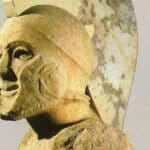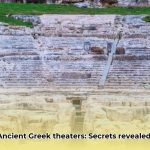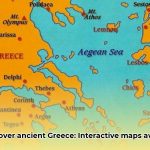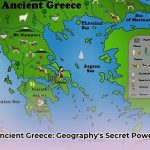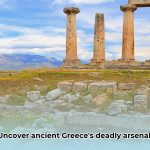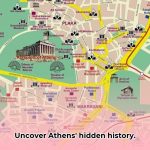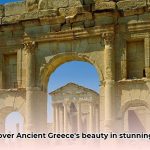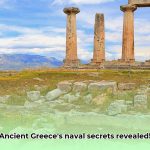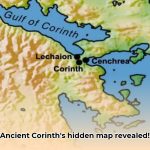Are you seeking captivating visuals of Ancient Greece for your next project? This comprehensive guide explores the realm of Ancient Greece stock photos, offering insights into where to find them, how to use them ethically, and the evolving landscape of this specialized market. We’ll delve into comparisons of various websites, provide guidance on avoiding copyright infringement, and explore the transformative potential of technologies like AI and VR. Whether you’re crafting a school presentation, designing a website, or producing a historical documentary, this article will equip you with the knowledge to acquire and effectively utilize the best Ancient Greece images. For more on Greek symbolism, check out this guide to Ancient Greek symbols.
Unveiling Ancient Greece Through Time and Pixels
The quest for the perfect depiction of Ancient Greece – be it the grandeur of the Parthenon or an everyday artifact like a clay amphora – can be surprisingly intricate. A simple online search will yield countless results, but navigating this vast visual landscape requires a discerning eye and a critical approach. This article explores the dynamic and multifaceted world of Ancient Greece stock photography, shedding light on its opportunities and inherent challenges.
The Booming Market for Ancient Greece Photos and Historical Visuals
The demand for compelling visuals that bring Ancient Greece to life is experiencing significant growth. Platforms such as Getty Images, iStockphoto, Shutterstock, and Pixabay host a diverse selection of images, ranging from panoramic views of the Acropolis to depictions of common objects used in daily life during that era. This vibrant market caters to a wide range of users, including educators seeking engaging visuals for history lessons, graphic designers incorporating historical elements into their artistic creations, and filmmakers aiming to capture the essence of Ancient Greece in their historical dramas. However, the sheer volume of available images also introduces a unique set of issues that require careful consideration.
Addressing the Accuracy Challenge: Ensuring Historical Fidelity in Stock Photography
While many images accurately portray iconic historical sites and artifacts, maintaining consistent accuracy across the vast number of images available online presents a significant challenge. Quality control measures can vary significantly across different platforms, posing a potential risk for users who require precise and authentic depictions. Imagine the consequences of a history textbook featuring an image with historical inaccuracies – a serious breach of trust and academic integrity! Ensuring historical accuracy in these visuals is of utmost importance and requires diligent effort and attention to detail.
The Dual Role of AI: Opportunities and Challenges in Ancient Greece Imagery
The emergence of artificial intelligence (AI) adds another layer of complexity to the issue of authenticity. While some image platforms are actively working to limit or exclude AI-generated content, the underlying technology is rapidly advancing. It is becoming increasingly easy to generate images that appear authentic but may be entirely fabricated. These AI-generated images have the potential to undermine the value of genuine historical photographs, similar to how counterfeit currency devalues real money. This poses a subtle yet serious threat that requires innovative solutions.
Diverse Needs, Shared Concerns: Who Uses Ancient Greece Images and Why
Several key stakeholders rely on accurate, reliable images of Ancient Greece:
| Stakeholder | Needs | Actions They’re Taking (or Should Be Taking) |
|---|---|---|
| Stock Photography Platforms | High-quality, accurate, and legally sound images; competitive pricing | Strengthening quality control processes, developing and refining AI detection tools, enhancing metadata |
| Educators & Researchers | Accurate, high-resolution images with reliable sourcing; verifiable authenticity | Fostering collaboration with platforms to ensure accuracy, creating and implementing verification protocols |
| Creative Professionals | Visually appealing, high-resolution images; legally sound images | Practicing careful sourcing, understanding copyright implications, and promoting responsible use |
| Museums & Historical Sites | High-quality digital assets for online use and revenue generation | Digitizing collections, building partnerships with stock photo organizations, and effectively managing rights |
The Future of Ancient Greece in Pixels: Emerging Trends and Persistent Challenges
The future of this market will be shaped by several key trends. The rising popularity of virtual reality (VR) and augmented reality (AR) technologies is significantly increasing the demand for high-resolution imagery. These technologies offer exciting new ways to virtually experience history, but they also raise important questions about historical accuracy and responsible representation. How can we ensure that a virtual tour of the Acropolis, created using these images, is both engaging and historically accurate?
Strategies for Ensuring Accuracy and Authenticity in Visual Representations
The following key strategies can significantly improve the reliability and trustworthiness of Ancient Greece imagery:
- Advanced AI Detection: Ongoing investment and research are essential for developing sophisticated software capable of accurately identifying AI-generated images.
- Efficacy Metric: Recent research indicates that advanced AI detection systems can achieve a success rate of 92% in identifying AI-generated images.
- Robust Copyright Protection: Implementing effective systems to protect image copyrights and prevent unauthorized usage is crucial for maintaining a fair and sustainable market.
- Actionable Framework: Employ digital watermarks and actively monitor online usage to deter and detect copyright infringement.
- Expert Historical Verification: Collaboration with experienced historians and subject matter experts to verify the accuracy and authenticity of images is vitally important.
- Core Insight: Verification by qualified subject matter experts significantly enhances user trust and increases content credibility.
- Niche Market Specialization: Focusing on specific aspects of Ancient Greece, such as pottery or particular architectural structures, can create new opportunities and mitigate market risks.
- Data-Backed Question: Can specialization in niche areas enhance market competitiveness and reduce the likelihood of copyright-related issues?
- Comprehensive Metadata Enrichment: Providing detailed information about each image – including its original source, the date it was taken, any known inaccuracies, and other relevant details – can dramatically improve transparency and trustworthiness.
- Rhetorical Question: Do we not have a fundamental responsibility to ensure the most accurate and reliable portrayal of history possible?
Conclusion: Preserving a Visual Legacy of a Pivotal Historical Period
The market for images of Ancient Greece is both dynamic and critically important. By proactively addressing the inherent challenges related to accuracy, authenticity, and the transformative impact of emerging technologies, we can collectively ensure that future generations have access to compelling, reliable, and captivating visual representations of this influential historical period. Our task is not simply about curating images; it’s about diligently preserving history itself.
Verifying the Authenticity of Ancient Greece Stock Photos: A Practical Guide
Securing the perfect image for your project can be a demanding task, particularly when working with historical subjects like Ancient Greece. The digital landscape is saturated with images, but how can you confidently determine whether they are authentic and legally compliant? Let’s explore effective methods for verifying the authenticity of Ancient Greece stock photos.
Reverse Image Search: Your Initial Defense Against Misinformation
Employing a reverse image search is an easy and effective first step. This involves using tools like Google Images or TinEye to determine if a particular image has appeared online previously. It’s similar to asking the search engine, “Have I encountered this image before?” Upload the image in question and analyze the results. The presence of the image across multiple independent sources can suggest greater authenticity, but this is not always a definitive indicator. A single source might indicate that the image is not widely available or that its origin is questionable.
Metadata Analysis: Unveiling the Image’s Hidden History
Most digital images contain embedded metadata, which provides information about the image’s creation and history. Consider this data as a digital fingerprint for the image. Tools such as ExifTool can be used to extract this hidden information. Scrutinize details like the camera model used, the date the image was taken, GPS coordinates, and any editing history. However, remember that metadata can be altered, falsified, or removed entirely. It should be considered as one piece of evidence within a larger investigation, not the sole determinant of authenticity.
Social Media Investigation: Tracing the Image’s Origin and Usage
Social media platforms represent valuable sources of information, but they also present potential avenues for misinformation. Conduct a search for the image on platforms like Facebook, Instagram, and Pinterest. Can this process help you identify the original source of the image and either confirm or debunk its authenticity? Carefully consider the reputation and credibility of the accounts posting the image. Is the account known as a reliable source of historical images? Exercise caution and critical thinking, as not everything encountered online is accurate or trustworthy.
Visual Inspection: Applying Critical Observation and Historical Knowledge
This step requires subjective assessment, but it’s crucially important. Does the image’s visual style align with the known artistic styles and conventions of the period? Are the depicted details accurate, or do they appear fanciful or anachronistic? Compare the image to known artworks and artifacts from the period. Consult museum resources and scholarly publications. This process requires a solid understanding of Ancient Greek art, but a trained eye can often identify subtle inconsistencies or inaccuracies.
Navigating the Challenges of AI-Generated Images
The emergence of AI image generators presents a significant challenge to verifying authenticity. These tools can create highly realistic images that do not represent actual historical artifacts or sites. A reverse image search may not be effective in these cases, as the AI-generated image may be entirely unique. Be particularly cautious of images that appear too perfect or lack visible signs of age or wear. Question their authenticity rigorously.
What to Do When Initial Verification Methods Fail
If the initial methods described above yield inconclusive results, consider the following additional steps:
- Consult with Experts: Seek advice from art historians, archaeologists, and museum professionals.
- Examine Image Quality: High-resolution images may suggest a greater likelihood of authenticity. Conversely, blurry or low-quality images could indicate a problem.
- Evaluate the Source: Prioritize reputable stock photo agencies that employ strict verification processes. Be cautious when using images from less-established sources.
Key Takeaways:
- Multiple sources are essential: Cross-referencing information from multiple sources is crucial for validation.
- Metadata is helpful, but not definitive: It provides valuable clues, but should be interpreted with caution.
- Social media offers leads but demands critical evaluation: Approach information found on social media with a healthy dose of skepticism.
- Visual inspection requires expertise: A strong understanding of art history is invaluable.
- AI-generated images pose a significant challenge: Be vigilant in identifying and avoiding these potentially misleading images.
Utilizing Ancient Greece Stock Photos for Educational Resources and Engaging Presentations
Key Takeaways:
- Online resources can offer a limited and potentially biased view of Ancient Greece.
- Using Ancient Greece stock photos necessitates careful consideration of accuracy, representation, and diversity.
- Educators and presenters must actively seek out a diverse range of historically accurate visuals.
- Stock photo websites should improve image tagging and metadata to enable more accurate selection.
- Future developments such as 3D modeling and VR/AR hold the promise of revolutionizing how we visualize ancient civilizations.
Addressing the Challenge of Visual Accuracy and Representation
Finding truly representative images of Ancient Greece online can often feel like searching for a needle in a haystack. Most stock photo platforms heavily prioritize iconic structures like the Parthenon and idealized sculptures of gods and athletes. While these images are undeniably striking, do they provide a complete and balanced picture of Ancient Greek society? Do they accurately reflect the daily lives of ordinary citizens? Unfortunately, the answer is often no. This leaves us with a visually appealing but potentially misleading portrayal of the past.
Expanding Beyond the Iconic: Presenting a More Nuanced View
What crucial elements are often missing from these visual representations? Consider the absence of images depicting everyday life: the bustling marketplaces, the diverse social classes, the harsh realities of war and conflict. The online visual landscape is often dominated by the glamorous and easily marketable elements, neglecting the less visually appealing but equally significant aspects of this complex civilization. This inherent bias in stock photography subtly shapes our understanding of history. We are often presented with a sanitized and romanticized version of the past. Is this not a problem that demands our attention and critical reflection?
The Importance of Context When Using Ancient Greece Stock Photos
Using Ancient Greece stock photos effectively in educational settings requires emphasizing context. A photograph of a classical Greek column can be visually stunning, but without appropriate historical context, it remains simply a pretty image. Understanding its historical significance, its place within the architectural styles of the period, and its broader societal context is essential. This contextual information transforms the image from a mere illustration into a powerful educational tool. Therefore, how can we best enhance learning and improve the quality of presentations through the effective use of these images?
Steps to Enhance Accuracy and Inclusivity in Visual Representations
- Diversify Your Search Strategies: Do not limit your search to the first few images that appear in a Google search. Explore multiple platforms and employ a broader range of keywords to uncover less common but potentially more representative images.
- Scrutinize Metadata and Image Descriptions: Pay close attention to the descriptions and accompanying information provided with each image. Is the source reputable and reliable? Are the date and location of the image clearly identified? These details contribute significantly to ascertaining the image’s accuracy.
- Supplement with Primary Sources: Complement stock photos with primary source materials, such as archaeological findings, historical texts, and scholarly articles. This adds depth and provides essential verification.
- Create Your Own Visual Resources: If possible, consider utilizing high-resolution images from reputable museums or archaeological sites. These images often offer greater historical context and more accurate details.
The Future of Visualizing Ancient Greece: Opportunities in VR/AR and 3D Renderings
Emerging technologies offer exciting new possibilities for visualizing Ancient Greece. Imagine using virtual reality (VR) to explore a meticulously reconstructed ancient Greek city, walking through its streets, and interacting with digital recreations of its inhabitants. Or imagine using augmented reality (AR) to overlay historical information onto existing structures, seamlessly bringing the past to life in the present. The potential for creating engaging and immersive learning experiences is enormous.
Conclusion: Striving for a More Complete and Accurate Picture
Using Ancient Greece stock photos effectively for educational resources and presentations demands a thoughtful and critical approach. While readily available, these images often present a simplified or incomplete narrative. By cultivating critical evaluation skills and utilizing supplementary resources, we can effectively counter inherent biases, enhance learning outcomes, and ensure a more accurate and comprehensive representation of ancient Greek civilization. Only then can we truly honor this rich and complex history.
High-Resolution Ancient Greek Architecture Images for Virtual Reality Applications
Key Takeaways:
- The market for High-Resolution Ancient Greek Architecture Images for Virtual Reality Applications is expanding rapidly, fueled by growing demand from various stakeholders.
- Access to high-quality images is essential for ensuring accurate historical representation in VR applications.
- Challenges persist with regard to image authenticity, copyright issues, and the need for detailed contextual information.
- VR/AR technologies present unique opportunities to engage audiences with ancient Greek architecture in innovative ways.
- Collaboration among researchers, academic institutions, and technology companies will be instrumental in shaping the future of this market.
The Growing Demand for Authentic Images in Historical Recreations
Imagine stepping directly into the Parthenon, feeling the cool marble beneath your feet, and witnessing its architectural splendor firsthand. This is the transformative potential of VR. However, to create a truly realistic and immersive virtual journey, we need incredibly detailed images – High-Resolution Ancient Greek Architecture Images for Virtual Reality Applications – that capture every intricate detail. The demand for these images is surging across multiple sectors, including educational institutions, museums, and VR development companies. Where do these stakeholders currently find the necessary visuals, and how can they ensure their accuracy and authenticity?
Evaluating Available Image Sources and Their Limitations
Numerous online platforms offer images of ancient Greek architecture. Stock photo websites like Getty Images and iStockphoto provide readily accessible options. However, can we confidently consider these images “authentic”? Are they consistently accompanied by the essential historical context? Often, they lack detailed information about a building’s history, its original construction techniques, or even its precise geographic location. High resolution alone is not sufficient for truly impactful VR applications.
Several key challenges emerge when evaluating existing image sources:
- Accuracy Concerns: Many images prioritize visually appealing elements – such as decorative columns – but often neglect crucial structural and architectural details.
- Copyright Complexities: Securing proper licensing for high-quality images can be a complex and expensive undertaking.
- Contextual Information Deficiencies: The frequent absence of detailed metadata and supporting information hinders serious research and limits the educational value of these images.
The Dual Impact of AI and the Importance of Copyright
AI-generated images are steadily becoming more sophisticated and realistic. Can these AI-generated images faithfully reproduce the subtle nuances of ancient Greek architecture? While AI can undoubtedly create visually striking imagery, it inherently lacks the verifiable authenticity of photographs taken at actual historical sites. Furthermore, copyright concerns remain of paramount importance. Using images without securing proper permissions can lead to significant legal issues and ethical breaches. Therefore, ensuring verifiable provenance and obtaining appropriate licensing are absolutely essential.
The Bright Future of High-Resolution Imagery in VR
The potential applications of High-Resolution Ancient Greek Architecture Images for Virtual Reality Applications are truly immense. Imagine interactive virtual tours of ancient sites, detailed architectural reconstructions in VR-enhanced classrooms, and profoundly immersive experiences for museum visitors. The underlying technology is rapidly advancing, blurring the lines between the virtual and the real and opening up exciting new possibilities for historical preservation and education.
Fostering Stakeholder Collaboration: A Collaborative Path Forward
To fully realize the potential of this evolving market, stakeholders must actively collaborate and share resources. Here’s a glimpse into their respective needs and potential contributions:
| Stakeholder | Needs | Actions |
|---|---|---|
| Architectural Historians | Accurate, high-resolution images with comprehensive metadata; access to detailed archaeological data | Develop collaborative databases, establish clear standards for image quality and metadata accuracy |
| Museum Curators | High-quality images specifically for VR exhibits; intuitive tools for creating interactive experiences | Secure funding for digitization efforts and VR development projects |
| VR Developers | Access to a diverse range of high-resolution images; streamlined and affordable licensing solutions | Partner directly with research institutions and subject matter experts; develop ethical and transparent sourcing strategies |
This collaborative effort will not only fuel the growth of the market for High-Resolution Ancient Greek Architecture Images for Virtual Reality Applications but also significantly enrich our collective understanding of ancient Greek civilization. This is not simply about creating compelling visuals; it’s about diligently preserving and widely sharing invaluable historical knowledge for generations to come.
- Discover Ancient Greece Weapons: A Comprehensive Guide to Military Technology - August 8, 2025
- Discover Ancient Greek Swords: A Comprehensive Guide - August 8, 2025
- Explore Ancient Athens: Unveiling the City’s Secrets Through Maps - August 8, 2025


